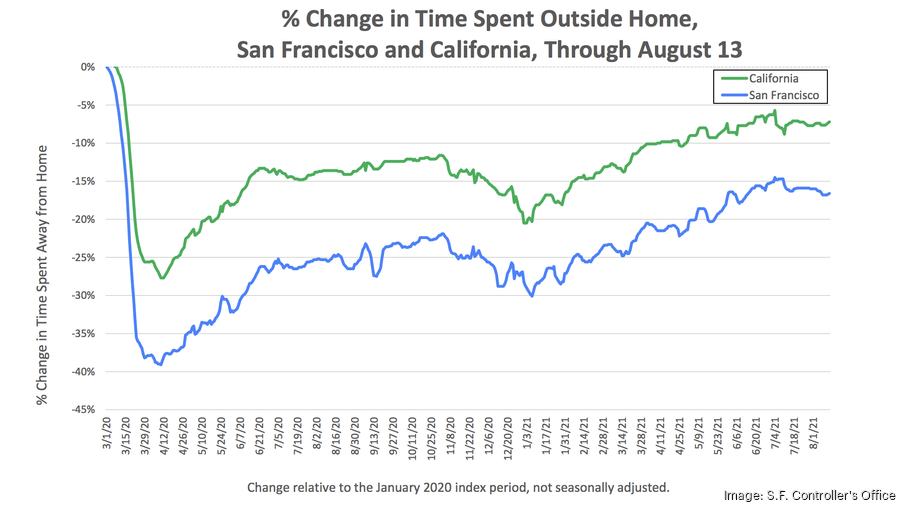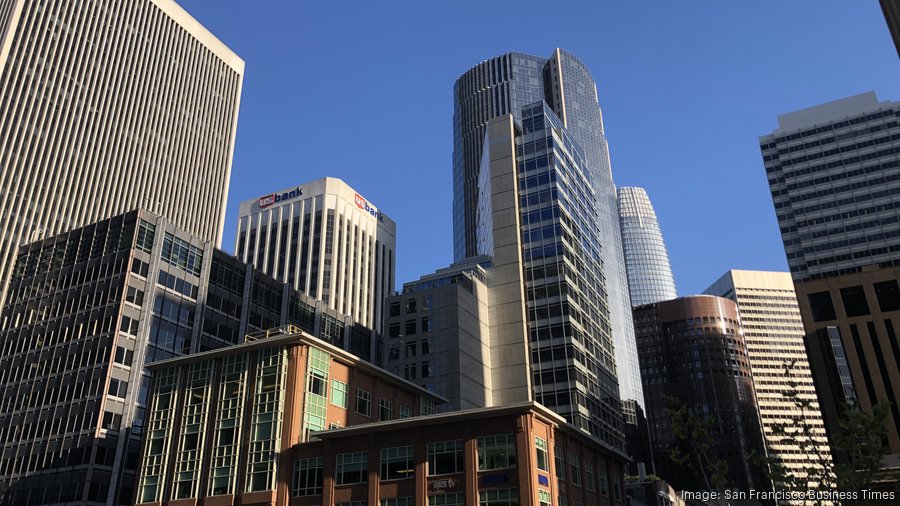San Francisco’s office attendance is down and the delta variant has stalled virtually all aspects of the city’s economy since the June reopening, but one bright spot has emerged: Employment is on the rise, with hospitality and leisure leading the way.
The sector added 5,400 jobs in July, bringing its total to 39,800 since January, according to an August report issued by the city's Controller’s Office, which is tracking the pace of the reopening of San Francisco’s economy. The professional services sector is right behind, adding close to 4,000 jobs between June and July.
The job growth comes despite the city’s hotel occupancy rate still hovering under 50% in mid-August, far below the near 80% pre-pandemic average in 2019.
The emergence of the delta variant is a factor contributing to slower-than-expected economic recovery in San Francisco, per the controller’s office. Office attendance, time spent outside the home and small business sentiment have dipped since measured in July, and air travel and the city’s tourism industry are still well below 2019 levels, according to the report.

As of the first week in August, weekly office attendance in San Francisco dipped below 20%, after peaking in mid-July for the first time since last April at just over 20%. New business registrations in July were under 600 per month, falling to the lowest point since January 2020 and remaining well under the pre-pandemic average of close to 1,200 per month in 2019.
Despite the lack of foot traffic in and around the city’s downtown, BART ridership continues to climb, with the average weekly riderships reaching a peak in July of nearly 17% of levels for the same time period in 2019 — which is still well below normal, the report notes. Vehicular traffic on the Golden Gate Bridge and the Bay Bridge was at 90% of normal, pre-pandemic levels in July.
San Francisco International is lagging behind other western airports in terms of air travel recovering. The Controller’s office tracked total enplanements, or aircraft boardings, in June — for domestic and international travel — at just over 40% of levels reached in June 2019.
Meanwhile, San Francisco rents are once again on the rise. While still down 17% from the 2019 pre-pandemic average, average apartment rents have ticked up steadily since January, reaching close to $2,500 per month in July, according to the report.
